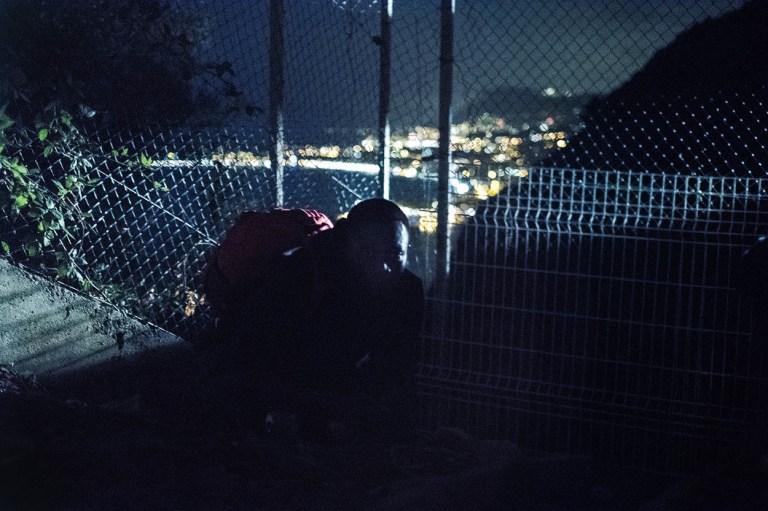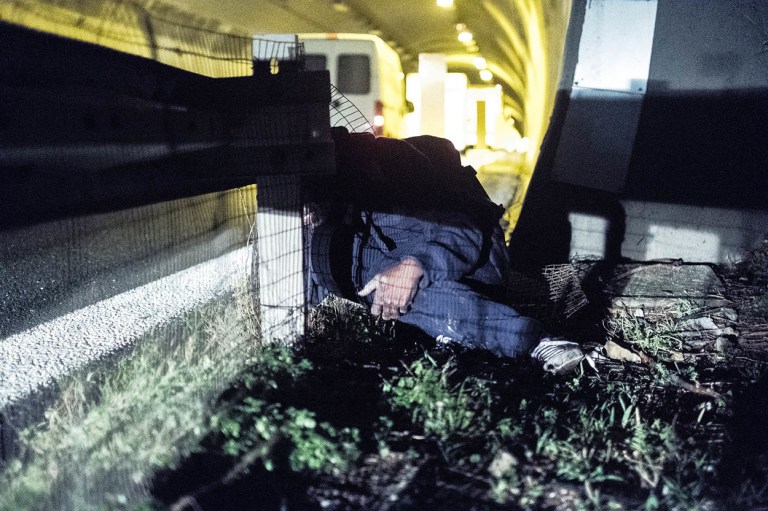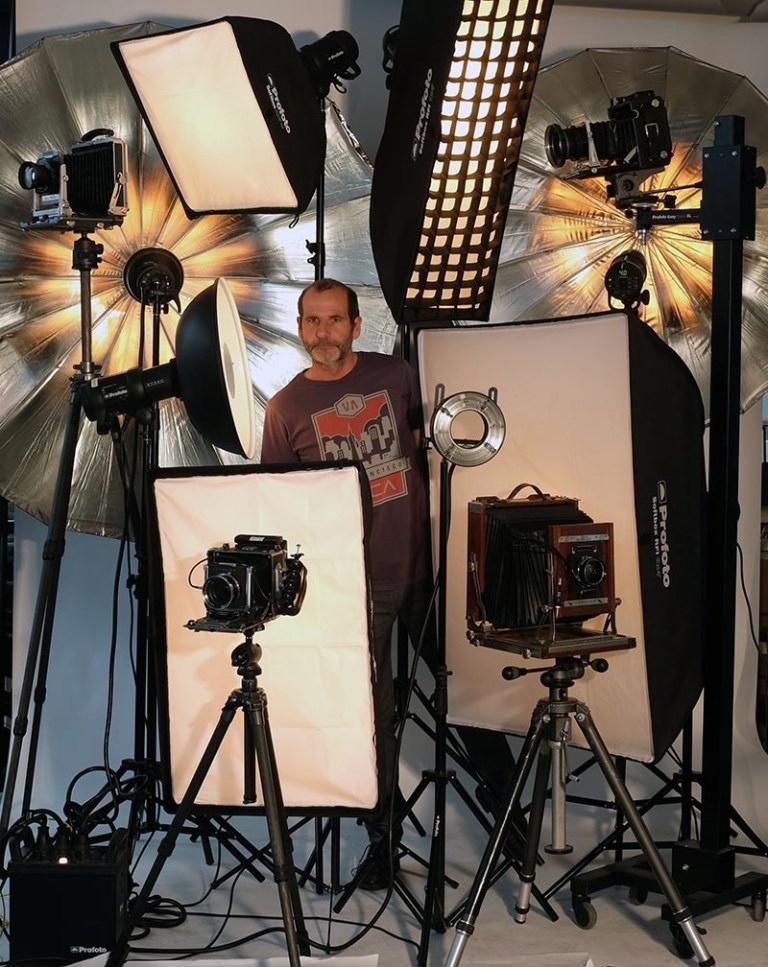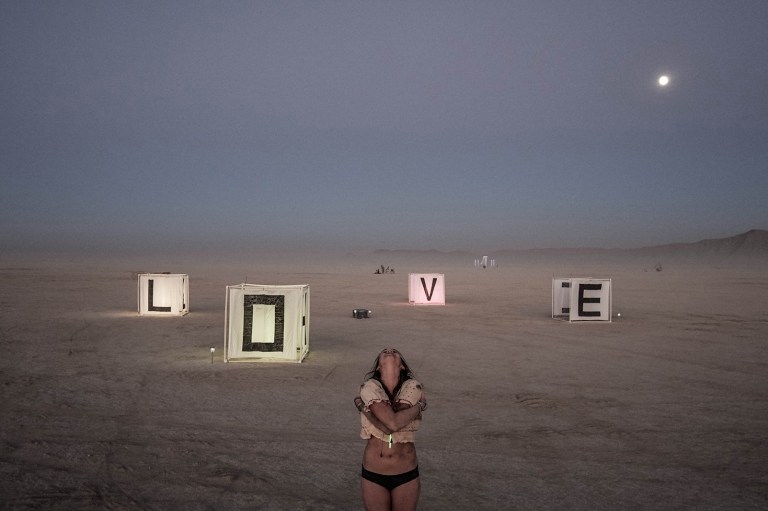 February 24: Still-lifes or live stills? Might your preference indicate your level of political interest?
February 24: Still-lifes or live stills? Might your preference indicate your level of political interest?
An exhibition Still Life opens at Grob Gallery, 2, rue Etienne-Dumont in Genève, Switzerland, a new group show of still life images today, while Galerie Hegoa, 16, rue de Beaune, Paris launches photojournalist Eric Bouvet‘s Vivre Libre.
Over the last few years Bouvet has covered major news stories and undertaken intensive photo essays around the world. That’s what you might read on any photojournalist’s website, but truly it is exhausting even to look at Bouvet’s. If you want ‘close to the action’, he shoves you right into it.
This October 2016 series in which he follows desperate migrants attempting to cross into France from Italy using the Italian E80 express motorway which joins the A8 French highway along the precipitous coast between Ventimiglia and Menton. He accompanies them on a dangerous crossing of barriers and of the motorway itself, running the gauntlet of its narrow fifty-year old Tunnel de la Giraude and Viaduc de Garavan.


He catches the furtive figures as they are momentarily illuminated, backlit or silhouetted by speeding truck headlights, confusion, desperation and fear freezing their limbs as they hide waiting, adrenaline springing them across roadways the next instant.

The series puts me in mind of New Zealand director Vincent Ward’s The Navigator: A Medieval Odyssey of 1988, in which medieval villagers set out on an religious quest of salvation from the oncoming Black Death and, guided by a boy’s vision, negotiate a tunnel from 14th century England into an alien land to find a church on which to place a cross they have carried. Instead they cross not only space, but time, into 20th century New Zealand; they too battle with juggernauts to cross highways to their destination.

Among his most compelling, and harrowing, coverage is a story on the 2014 Ukranian Revolution 18–23 February 2014 in Maidan Nezalezhnosti, the central square in Kiev in the Ukraine. It was a people’s revolution in which Russian pressure and interference contributed to the death of 75-100 protesters and around 10 police.

That this is so quickly forgotten and forgiven along with other Russian war crimes in Syria and elsewhere by so many who support the Trump administration, is extraordinary. Russia-backed locally hired snipers were the predominant cause of death amongst the ordinary citizens who had gathered to protest against the actions pro-Russian Ukrainian President, Viktor Yanukovych, who was eventually ousted as a consequence these terrible events.
Amidst the smoke-blackened, exhausted protesters Bouvet finds himself immediately next to three, armed only with makeshift aluminium and plywood shields and construction or motorbike helmets, as they are shot by the police and snipers firing from the top of surrounding multi-storey buildings.
His other stories cover conflict zones including Iraq, Iran, Sudan, Somalia, former Yugoslavia, Gadhafi, revolution and the Arab spring (2011), ; the French army in the Afghanistan war (1986-2011); the Chechnya wars (1995-2000); as well as events and situations as diverse as Burning Man in the Nevada desert (2012 and 2016); migrants at Calais (2016); religion in Allahabad, India; The gatherings of the Rainbow Family in Brazil, Tennessee, Slovakia and Guatemala; deep-sea fishermen on the Atlantic (2011); Russian jails, young sailors on aircraft carriers, French police working in the Paris suburbs, France’s last coal miners (2004), and life for children with cancer at a pediatric clinic.
Born in 1961 in France Eric Bouvet studied Art and Graphic Industries in Paris, then worked as a staff photographer at Gamma agency, going freelance in 1991, working with a such NGOs and charities as Medecins Sans Frontieres and the International Red Cross. Published in numerous magazines including Time, Life, Newsweek, Stern and the New York Times magazine, his independent photojournalism has been honoured with five World Press Awards, the Prix du Public de Bayeux, a gold medal in the 150th anniversaire de la photographie, and the Front Line club prize.
Vivre Libre at Galerie Hegoa presents his antidote to a working life in the midst of suffering, injustice, conflict, and the myriad climate and social changes that threaten contemporary society. It is a joyful, often hysterical, celebration of love and freedom of sexual expression. The images are shot at Burning Man, gatherings of the Rainbow People and in the studio on large format Polaroid pos/neg.
These 8×10 and 4×5 format, white backdrop, flatly lit portraits cannot avoid comparisons with Richard Avedon’s Portraits (1976) and In the American West, Photographs by Richard Avedon (1985).

What Bouvet as a photojournalist brings to the studio is his capacity to avoid interrupting or interfering with what is before the lens, and a capacity deal with ordinary people as he finds them. This is a quality emphasised by association in the show with the inclusion of his Burning Man and Rainbow People series, shot on location.

Avedon was a photographer of fashion and celebrities, and while In the American West consists of subjects recruited at country fairs and rodeos, the control he exercises turns them into anthropological specimens not much more individual than the freshly butchered bullock heads that feature in the same volume; to confirm this, just look again at the expression of the young man with the gutted rattlesnake.
In Bouvet’s case the power dynamic can be read in the lively poses and expressions of his variously gendered and sexually oriented subjects; live stills, The people in front of his lens proudly display their sexuality.

Where Avedon’s subjects look directed, Bouvet gives his licence to perform themselves and their relationships in a collaboration. Editing may be an issue; the series could be stronger with more stringent selection, but that hardly matters when his emphasis is on an expression of individuality and fun in contrast with and as a relief from, the horrors of war. A comparison with Francisco Goya’s La Maja Desnuda would be more apt!
Is still life more your thing? Constantin Brancusi, Pablo Picasso, Piet Mondrian, Nobuyoshi Araki, Marcel Bovis, Andre Kertész, Sarah Lucas, Rodrigo Moynihan, Grégoire Müller, Roger Parry, Irving Penn and Emmanuel Sougez are at your service with forty images at Grob Gallery. Amongst flowers and domestic objects in ceramic, paintings, prints and table top photographs is Roger Parry’s image that breaks with the easy liveability we might expect of the still life.

In 1928 Roger Parry met surrealist photographer Maurice Tabard, who introduced him to photography, and the following year they collaborated to illustrate Léon Paul Fargue’s text Banalité when in June 1929 Parry becomes Tabard’s assistant at Studio Deberny-Peignot.

They continued to collaborate extensively during the period this picture of a dead rat under a bell jar was made. It is an image made at the height of the Surrealist movement, after Magritte and Dali had moved to Paris but just before Max Ernst began to experiment with decalcomania and grattage.
Parry’s still life and Bouvet’s live stills both exert undeniable emotional power.









One thought on “February 24: Still?”